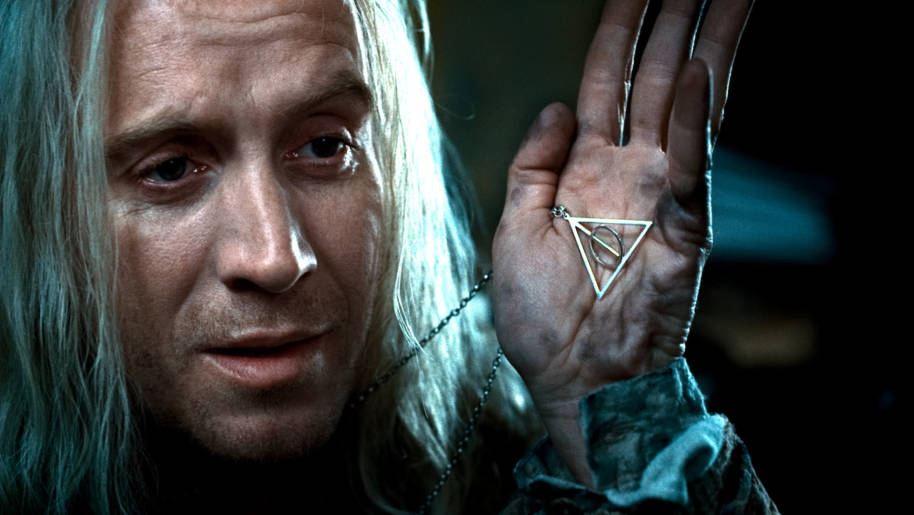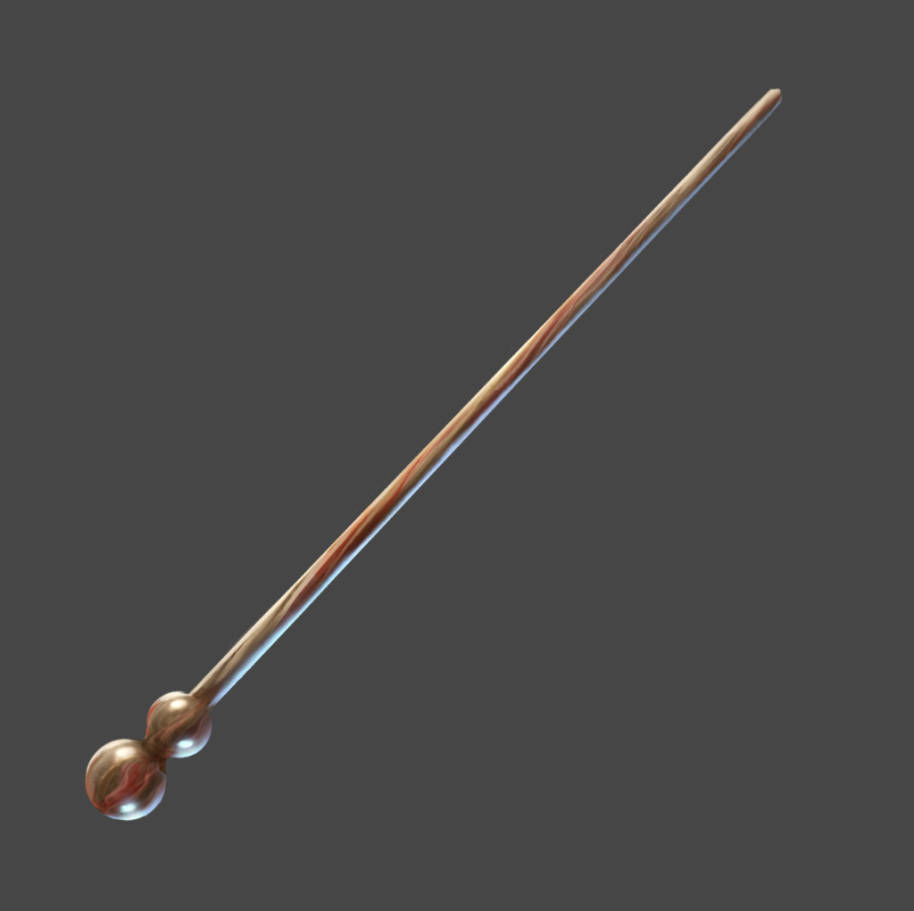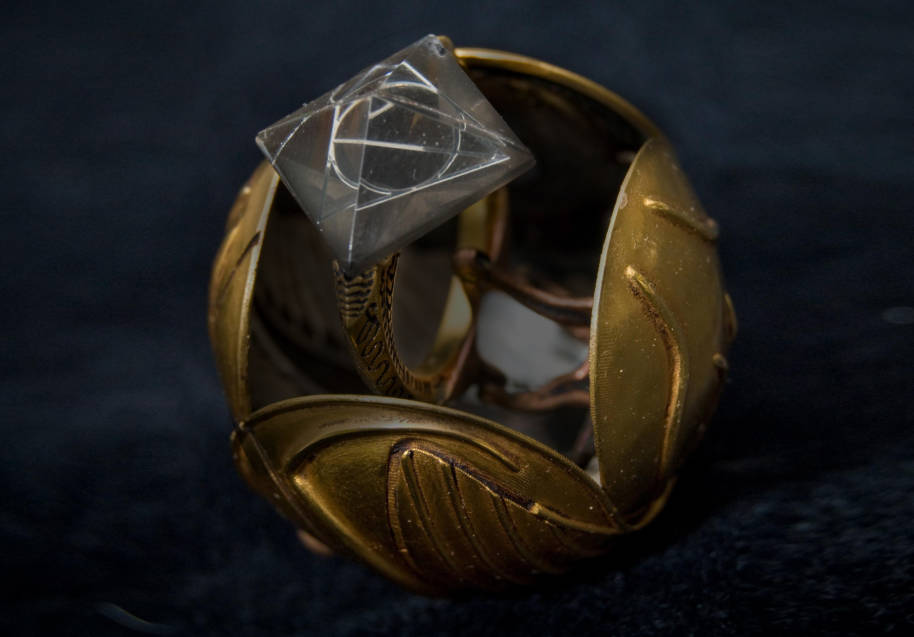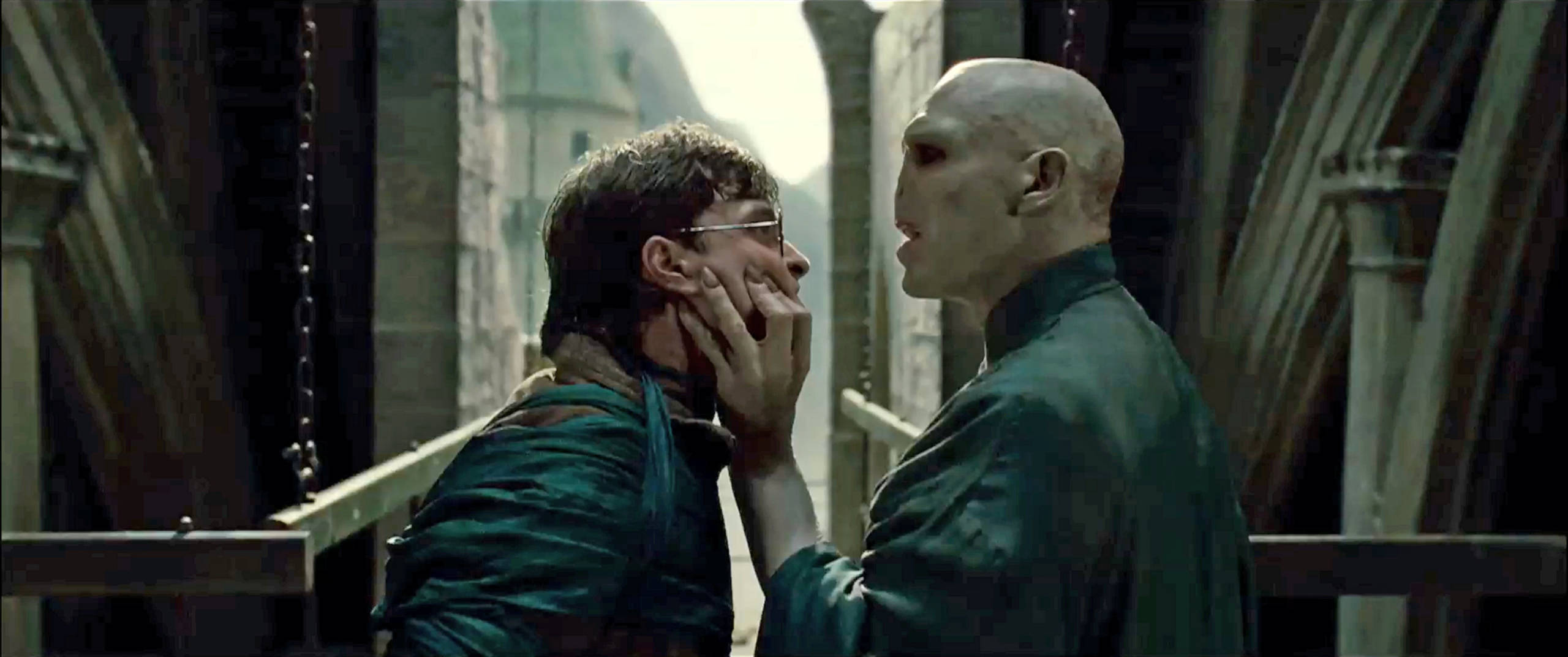
Even before Voldemort decided to act on a prophecy he only half understood, the connections between the Dark Lord and the Boy Who Lived were numerous. Although they grew up decades apart, Harry and Voldemort were both half-bloods initially raised in a Muggle world, and neither had any concept of their own heritage or the wider wizarding world.
So they obviously weren’t aware of their common descent from the creators of the Deathly Hallows, aka the Three Brothers. It was a long time before Harry realised his Invisibility Cloak meant he was descended from Ignotus Peverell, and although Voldemort boasted of his Slytherin heritage he does not seem to have appreciated his Peverell ancestry. And yet there again he and Harry were similar: Voldemort’s connection to the Peverells was also revealed through a family heirloom – a ring containing Cadmus Peverell’s Resurrection Stone that had been passed down through the generations, eventually ending up in the possession of Voldemort’s mother’s family.

Of course, as Sirius once told Harry, most wizarding families were related in some way, and it certainly wasn’t this distant, unknown connection that led Voldemort to target Harry. Instead, Dumbledore believed Voldemort marked out Harry because he had noticed the similarities they shared – not just their childhoods, but their appearance, Parselmouth status, twin-core wands, connected minds and, briefly, a shared interest in the Elder Wand.
But as Harry learnt more about his connection with Voldemort, it became clearer that the differences between them were far more important – and those differences often came down to their choices, particularly when it came to life, love and death.
Dumbledore believed Voldemort was ignorant of the relationship between the three Hallows, something supported by the fact that he used his own ancestral Hallow to create a Horcrux. Even if he had known about them, Dumbledore speculated that he wouldn’t have cared: Voldemort chose Horcruxes, not Hallows, always wanting to work alone rather than rely on anything or anyone else.

The exception to this was the third Hallow – the Elder Wand. This was the one Voldemort had heard of, and he coveted it for its history and unbeatable reputation. At first he wanted only to defeat Harry, but after a time he became obsessed with obtaining it to make himself truly invulnerable. And obtain it he did, but not under circumstances that made him its master.
Harry might have initially favoured the Resurrection Stone, but for a time he too was equally obsessed with the Elder Wand:
And desire for the Elder Wand, the Deathstick, unbeatable, invincible, swallowed him once more...
Harry Potter and the Deathly Hallows
Unlike Voldemort, though, Harry’s obsession was short-lived. It was grief for Dobby that gave him clarity, and in those cold moments outside Shell Cottage Harry found himself able to think, to understand in a way that Voldemort never could. He knew, as Dumbledore had known, that possessing the three Hallows might make him Master of Death – but in the end, he chose not to pursue the third Hallow because defeating Voldemort was more important than saving himself.
Voldemort always feared death – as an 11-year-old he scorned his mother for succumbing and dismissed it as weakness – and his Horcrux journey was all about achieving immortality, keeping himself alive with no thought for anyone else or even his own soul. For a man who valued life so lightly, he was obsessively frightened of the alternative.

Harry’s reaction was entirely opposite. He embraced life, but he never ran from death. He chose to dig Dobby’s grave by hand because he was starting to understand Dumbledore’s belief that grief and love were two sides of the same coin. Alone in the dark, he accepted Dumbledore’s last unspoken instruction: that he might know about the Hallows, but it would not benefit him to seek them out. And, in the end, he chose to walk to his own death freely.

That was when the Resurrection Stone revealed its secrets to him. It was also possibly the closest Harry ever came to being Master of Death: possessor of two Hallows and true master of the Elder Wand. So perhaps it was the protection of the Hallows that allowed him to sacrifice himself to Voldemort and survive, but even without them, Harry would have done the same. As Dumbledore told him:
‘You are the true master of death, because the true master does not seek to run away from Death. He accepts that he must die, and understands that there are far, far worse things in the living world than dying.’
Harry Potter and the Deathly Hallows
That’s why, despite his Horcruxes and his fixation with the Elder Wand, Voldemort could never master death. He ran from it as Harry did not. Harry’s own brief obsession with the Hallows was motivated not by fear, but by a desire to bring back and protect the people he loved.
In the end, though, it was his willingness to let the Hallows go that made him their true Master.


